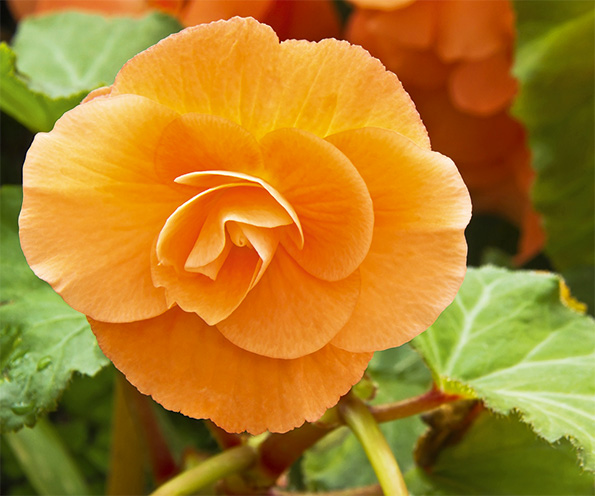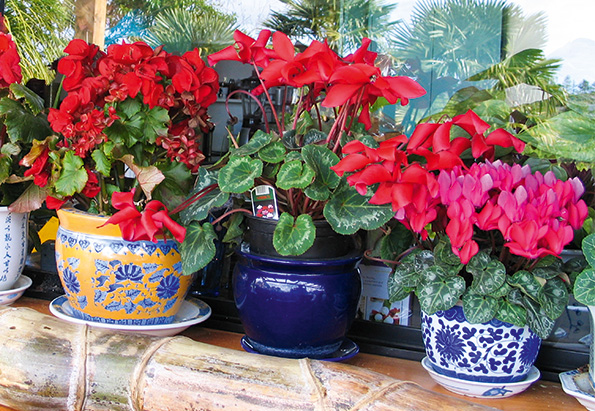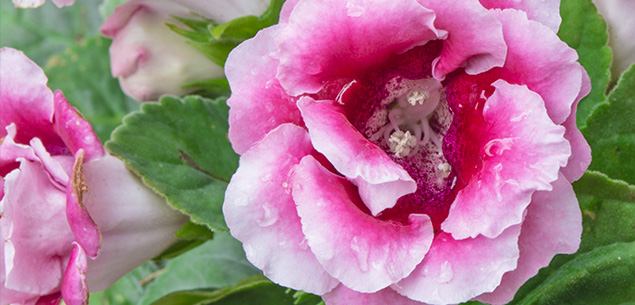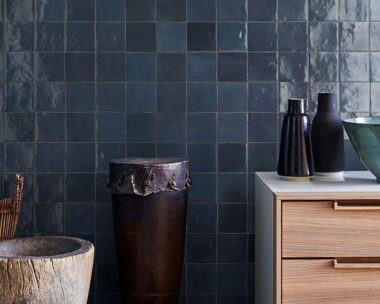A neighbour gave me a piece of a begonia plant a year or so ago.
I don’t love begonias and might have thrown it out, but I put it in a pot in the bedroom in case he ever asked me how it was doing.
Over time it grew one unattractive, leggy stem about a metre long with no sign of flowers so one day, by which time I figured the neighbour would have forgotten about it, I chucked it out. It landed somewhere in my white garden and I never thought about it again until I noticed a glimpse of red out there.
A white garden is a white garden and I was determined to hunt down the red interloper and put it humanely to death.
It was, of course, the begonia, which had produced myriad flowers and made everything in the white garden look whiter.
I hurriedly bought a gorgeous red urn to put nearby and everything was rosy.

This absolutely perfect bloom is enough to encourage a love affair with begonias.
I had thought begonias were rather ugly plants with simple flowers and not much going on in the foliage department, but this is not the case. Begonia flowers are not unlike camellias and gordonias, so what’s not to admire? Like camellias, they do plain, fancy, single, double, frilly, toothed and whatever-else-your-heart-desires flowers in whites, creams, pinks, yellows, apricots, oranges and reds.
And that aforementioned foliage deserves a second, third and fourth look, because some of the leaves are amazing.
I’ve bought another couple of begonias and they won’t be relegated to the bedroom. I’ll nurture them and see if we can sustain a good relationship.
They like well-drained soil, shelter from the wind, and a bit of shade during the day.
It’s important to make sure the soil is properly moistened right down through the root system. Only water again when the surface of the soil had dried out. Don’t overdo it, or allow the soil will become too soggy.
Depending on whether you want to grow your begonias indoors or out, and whether you want great flowers or great foliage, there are a number of varieties from which to choose.

A gang of cyclamens and begonias enjoy each other’s company in a warm kitchen setting.
Elatior begonias
These produce colourful clusters of flowers for most of the year. They’re bred as indoor plants so keep them in the kitchen.
For some reason, they like kitchens – perhaps they enjoy culinary conversations. Place the base on a saucer of pebbles sitting in water. This keeps the potting mix above the water level and, as the water slowly evaporates, increases the humidity around the plants.
Tuberous begonias
Don’t panic when these die back during the cold weather. They survive as flat underground tubers until the weather warms, and may then surprise you by producing gorgeous, quite complex, multi-petalled flowers. If you like, you can lift and store the tubers for winter and replant in August or September.
Bedding Begonias
These low-growing varieties, with pink, white and cerise flowers, are usually grown as annuals but may last for more than one season if their environment is frost-free. They like the morning sun and good drainage but, like most begonias, they’re very prone to mildew. You can help to avoid this by watering the plants at the base in the morning, so that the leaves dry quickly. Plants in this group are often termed “semperflorens” (forever flowering) which aptly describes their generous performance.
Rex Begonias
The fabulous foliage of Rex begonias offers a large range of colours, shapes, and textures. The flowers are insignificant, but with leaves like these, who cares? They like shaded, humid conditions and rich, aerated soil. Don’t over-water or over-fertilise – they could rot and die. Leaf sizes vary but grow up to 20cm x 12cm, and the plant itself can reach approximately 30cm x 45cm – perfect for a good display in a shady garden.
Interestingly, it seems many popular begonia hybrids have been bred by women. With recorded history of horticulture and landscape design dominated by blokes, this fact is an unexpected delight.




